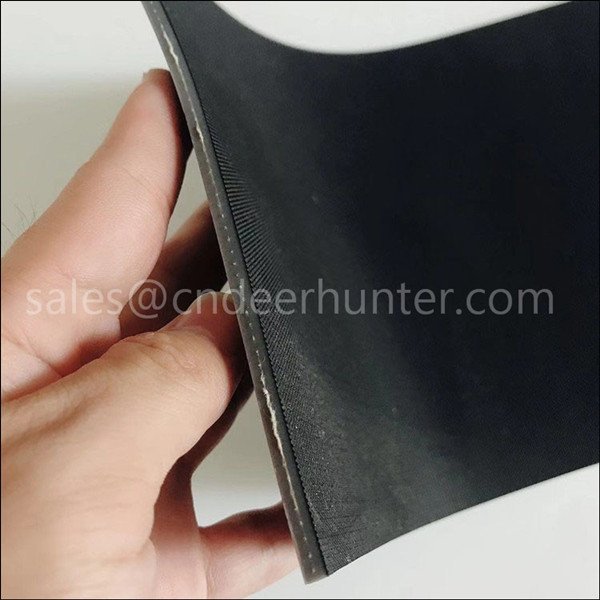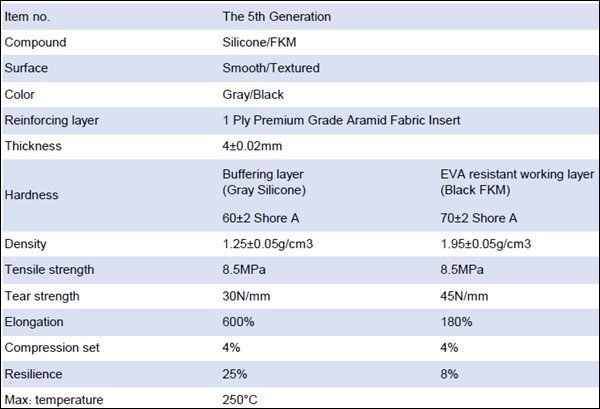Silicone Sheet For Solar Panel Manufacture In Renewable Energy Market
Silicone sheet - an irreplaceable element in renewable energy

For solar panels lamination, silicone sheets are becoming integral parts. The use of solar modules on the roofs of commercial buildings and on residential structures has increased rapidly over the last decade. Every year there are many new photovoltaic installations in homes and businesses. New solar projects were established every 5 minutes in the world.
This trend is likely to continue as companies, governments, and homeowners aim to conserve energy, contribute to environmental sustainability, and save money. Solar panels reduce the reliance on fossil fuels that emit greenhouse gasses into the atmosphere.
The challenge for the solar industry lies in selecting high-quality membranes for solar modules lamination that will not deteriorate. As a leading silicone sheet manufacturer, understanding how photovoltaic solar diaphragms work will help both thin-film and crystalline solar panel manufacturers make the right decisions about the options available to them.
Components of Photovoltaic Solar Panels
Photovoltaic panels are made of several layers including glass and aluminum that surround the actual solar cell. A layer of ethylene-vinyl acetate (EVA) is used as an encapsulant to protect the highly sensitive solar cell. This is to sustain the cell’s power-generating abilities through long-term energy transfer, moisture accumulation, and the impact of ultraviolet (UV) rays.
However, EVA has some side effects. Outgassing from the EVA as it becomes thermoplastic can degrade silicone sheets and cause them to become brittle, and then fail.
So, what can be done to prevent EVA deterioration in photovoltaic silicone membranes?
Deer Hunter developed the 5th Generation silicone sheet for the solar laminator. This model is designed to resist the deterioration that results from EVA outgassing.
Its structure is constructed of two layers of material. One layer is made from hardness 60A silicone. The second layer is FKM material with durometer 70A, more resistant to the adverse effects of EVA.
There are plenty of benefits to installing our 5th Gen silicone sheet
Thickness: 4mm thickness (If you need other thicknesses, please inquiry us.)
Maximum width: 3800mm without any join
Customization is available according to the customer’s requirements.
Great Acid resistance
Chemical agents resistance,
High-temperature resistance,
Great tensile strength
Great tearing strength
Highly prolong the useful life
Another way to extend the life of the silicone sheet is to protect it with a layer of polytetrafluoroethylene (PTFE) placed between the module and the silicone membrane. PTFE is a water-resistant, anti-corrosive polymer. PTFE is also highly heat resistant. Between the modules and the silicone sheets, customers will add PTFE coated fibreglass sheet, which will increase the lifecycles of silicone sheets and provide other production benefits.
Deer Hunter offers a complete line of PTFE sheets that can be customized to the size and thickness specifications required for the photovoltaic industry. Standard grade and Anti-static PTFE glass fibre coated sheets are both available from us.
Deer Hunter also provides efficient logistics for stocking and shipping PTFE sheets and photovoltaic silicone sheets. This ensures a quick turnaround of orders that align with the lead times required by manufacturers.
Become Our Partner
We are well prepared to work with you tegether!
No matter who you are and what you do, a wholesaler, distributor or end-user, we are always looking out for new partnership chances. Submit an application today and our sales team will get back to you as soon as possible within 24 hours and help you select the right item you want.
- fullchance100
- 0086 13823789007
- exporting@cndeerhunter.com


